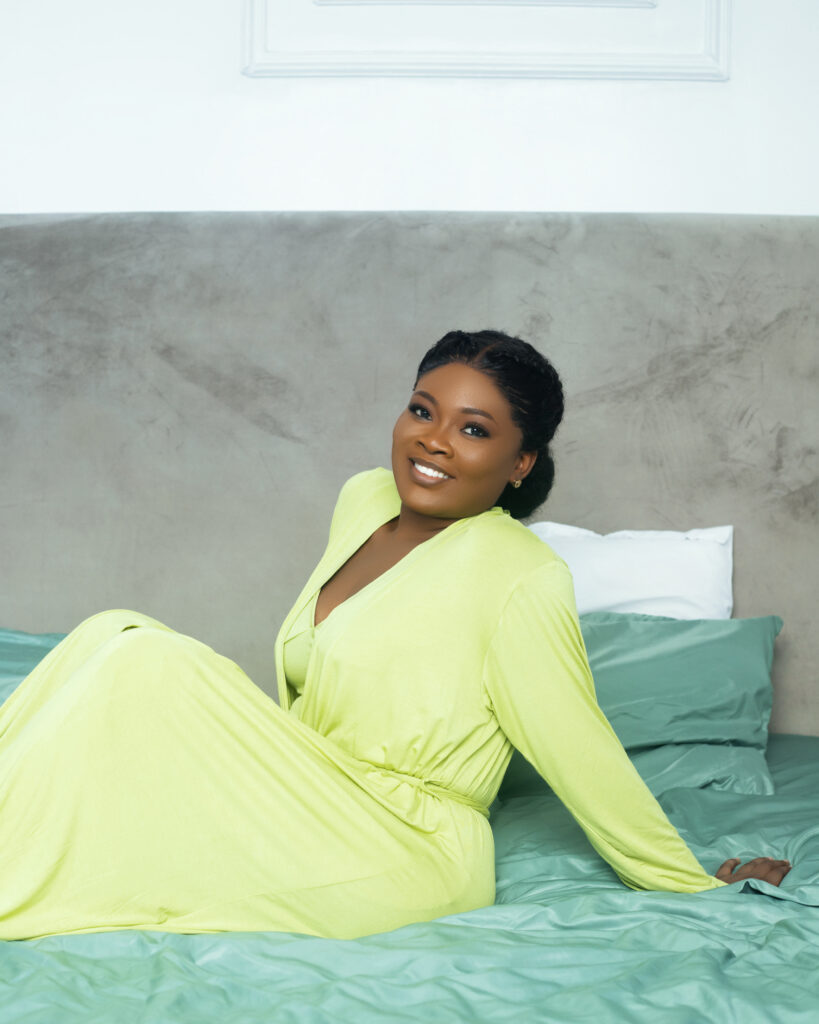Sleeping well during the rainy season isn’t always easy.
But you might be overlooking something important: your sleepwear.
The right sleepwear does more than keep you covered. It protects you from dampness, helps you stay warm, and even shields you from mosquitoes on restless nights.
And… It’s more powerful than you might realize.
It helps you:
- Stay comfortable despite unpredictable temperature drops
- Prevent skin irritation from humidity and sweat
- Sleep soundly through power outages and heavy downpours
For example, on cool, rainy nights, I always keep a lightweight robe within reach.
So I can layer up without overheating.
It’s a small detail, but it makes a huge difference.
In this guide, I’ll show you exactly how to do the same.
You’ll learn seven proven tips for choosing the best rainy season sleepwear, so you can stay cozy, dry, and protected no matter how the weather changes.
Plus, you’ll pick up simple habits that make your nights more restful and your mornings more refreshed.
Are you ready to get started?
1. Choose Moisture-Wicking Fabrics
Rainy season nights can be tricky.
The air feels cool… but somehow, I still wake up sweaty.
The fix?
Fabrics that wick away moisture.
They pull sweat from your skin and let it evaporate, keeping you dry, comfortable, and free from that sticky feeling.
And they do more than you think.
They:
- Help regulate body temperature
- Prevent skin irritation from humidity
- Reduce the risk of fungal infections in damp weather
Here’s what works best for me:
- Cotton: Breathable and affordable, but it can hold moisture longer
- Modal: Soft, smooth, and cool to the touch, dries faster than cotton
- Bamboo: Naturally antibacterial and gentle on skin
Tip: Always check the label. Look for “cool touch,” “breathable,” or “moisture control.”
Avoid heavy polyester blends; they trap heat and sweat.
The right fabric choice can turn a restless night into deep, refreshing sleep.
2. Layer for Warmth
Layering your sleepwear is one of the easiest ways to stay comfortable during the rainy season.
But don’t confuse layering for bulk clothing.
They’re connected but different:
- Bulk clothing means wearing one thick, heavy garment to keep warm (like a thick sweater or heavy blanket).
- Layering means combining light, breathable pieces you can add or remove depending on the temperature.
This approach gives you flexibility when the weather changes, and during rainy nights, it often does.
Here’s how you can make it work:
Start with a lightweight, long-sleeved pajama set as your base layer. This gives you enough warmth without overheating.
Then, keep a light robe, cardigan, or even a soft hoodie within reach.
You can throw it on when you feel a chill or during a midnight bathroom trip.
Why this works:
- You can adjust to temperature changes without fully waking up.
- You avoid the discomfort of one thick layer that gets too warm.
Extra hack: In areas that get sudden cold gusts at night, I keep an extra blanket folded at the foot of my bed. Most nights I don’t touch it, but when I need it, I’m grateful it’s there.
Layering isn’t just about comfort. It’s about preparing for the unpredictable, so you sleep through the night without the cold waking you up.
3. Keep It Breathable
There’s a big difference between feeling warm and feeling stuffy.
The rainy season can make nights unpredictable, sometimes cool and breezy, other times hot and humid.
That’s why I’ve learned the hard way that heavy, non-breathable fabrics are a bad idea.
They trap heat.
They make you sweat more.
And they can leave you feeling damp and uncomfortable under your blanket.
Here’s what breathability actually means:
- Allowing air to move between your skin and your clothes
- Helping your body regulate temperature so you don’t overheat at night
If you’re not sure where to start, here’s what I avoid:
- Thick fleece or wool pajamas in humid weather just trap heat
- Plastic-coated fabrics or fake satin that blocks airflow
Instead, I stick to lightweight cotton blends, soft knits, or fabrics designed for warm climates.
Even if you love silk or satin, make sure it’s the real deal or a breathable weave, not the heavy, synthetic kind that feels nice at first but leaves you sweating later.
When I made this switch, my nights instantly felt more comfortable, no more waking up sticky or restless.
4. Protect Against Mosquitoes
Rainy nights can be relaxing, until you hear that high-pitched mosquito buzz in your ear.
The truth is, rainy weather means more standing water.
And more standing water means more mosquitoes.
Once they get into your room, they’re not leaving without a fight.
Here’s what you can do to keep them away while you sleep:
Mosquito net: You can use a long-lasting insecticide-treated net (LLIN). They’re affordable, easy to find in most markets, and extremely effective.
Lightweight long-sleeved sleepwear: This helps cover your arms and legs without making you too hot.
Repellent creams or sprays: On nights you can’t use a net, you apply a mosquito repellent with DEET or natural options like citronella oil before bed.
Why this matters: mosquito bites can spread malaria, which is still a serious health risk here. Wearing protective sleepwear and using repellents is one of the easiest ways to prevent it.
Tip: If you use a mosquito net, tuck it under your mattress all the way around. Even a tiny gap is enough for mosquitoes to sneak in.
5. Consider Quick-Drying Materials
Damp clothes can be a real problem during the rainy season, especially sleepwear.
When humidity is high, laundry can take days to dry.
And… if your pajamas stay damp for too long, they start to smell musty.
In some cases, you might even spot tiny mold patches.
Here’s why quick-drying materials are a game-changer:
- They dry faster after washing.
- They dry faster on your body if you sweat at night.
This means you don’t have to wait forever to wear them again.
Quick-dry fabrics come in a few great options:
Technical fabrics, the kind used in athletic wear, but made softer for comfort in bed.
Lightweight cotton blends, thinner than heavy cotton, so they dry more quickly.
I’ve learned this makes a huge difference when laundry space is limited or you’re drying clothes indoors. You can wash, hang, and wear again without feeling like you’re stuck in a never-ending cycle of damp pajamas.
It’s one of the simplest ways to keep your sleepwear fresh and comfortable all season long.
6. Ensure Proper Ventilation
The right sleepwear can keep you comfortable, but without good airflow in your bedroom, it’s only half the solution.
Poor ventilation traps moisture, makes the air feel heavy, and can even lead to mold or stuffy breathing at night.
Here’s how you can make sure your bedroom stays fresh and breathable:
- Keep your windows open when it’s not raining, especially during the day, so fresh air can flow in.
- Even when it’s cool, a fan helps move the air around and reduce dampness.
- A small dehumidifier or simple moisture absorbers make a big difference in keeping the room dry.
When airflow improves, your breathable sleepwear actually works as intended.
You don’t wake up feeling sticky or weighed down by the air.
It’s about protecting your health.
Proper ventilation lowers the risk of respiratory issues over time and keeps your sleeping space fresh no matter the season.
7. Prepare for Power Supply Interruptions
If you’ve ever been relaxing in bed and suddenly heard the wind pick up, you probably know what comes next: the lights go out.
Power cuts can happen anytime, but during rainy nights, they feel even longer.
The air might get warmer without a fan, or the room might suddenly feel colder.
Either way, being unprepared can make for an uncomfortable night.
Here’s what you can keep by your bed so you’re ready:
- Flashlight or rechargeable lantern: Quick, reliable light when the power drops.
- Portable or battery-powered fan: For those sticky, humid nights when airflow matters.
- Light blanket: Keeps me warm if the temperature suddenly dips.
Bonus tip: You can also keep a drink nearby, like tea or water.
Taking slow sips before bed helps me feel cozy, especially when my sleepwear is already keeping me dry and comfortable.
When you prepare for power interruptions, you take the stress out of unexpected outages and make sure your night stays peaceful no matter what the weather does.
Final Thoughts
Rainy season nights can be some of the most peaceful I’ve ever experienced
But they can also bring a few challenges.
Damp weather, sudden temperature drops, and those determined mosquitoes can all make sleep harder than it should be.
That’s why you should focus on simple choices that make a big difference:
Moisture-wicking fabrics to stay dry, light layers to adjust easily, protection against mosquitoes, and a backup plan for when the power goes out.
Your sleepwear is an investment in your comfort and health.
When the rain starts to fall, you’ll be ready to stay warm, stay dry, and drift off without a single worry.
Recommended Reading:
5 Ways to Stay Cool at Night Without AC in Dry Season
7 Ways Quality Sleepwear Helps You Relax After a Long Day




